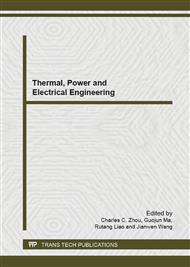p.882
p.888
p.892
p.899
p.905
p.909
p.915
p.920
p.926
Power System Stability Study with Empirical Mode Decomposition
Abstract:
Low frequency oscillations (LFO) reflect the damping and the stability of a power system and is essentially non-stationary. The LFO is a composite response of various oscillation modes and of which the frequency may be changing with time; thus, direct analysis of such time-domain responses is difficult. The main purpose of this paper is to apply the method of empirical mode decomposition (EMD) to the study of power system stability. First the method of EMD is to expand the time-domain responses under study into multiple intrinsic mode functions (IMFs). Then the 2D time-frequency information inherent in the response under study is obtained using the wavelet transform. The 2D time-frequency graph is further expanded into a 3D time-frequency-energy graph. Information from the 3D time-frequency graph is analyzed to determine those generators that have higher extent of oscillation involvement during the occurrence of LFO in the power system. The results from comparative analysis show that, at specific frequencies from LFOs, higher extent of oscillation involvement will reveal a greater factor of involvement in the frequency domain behavior.
Info:
Periodical:
Pages:
905-908
Citation:
Online since:
August 2013
Authors:
Price:
Сopyright:
© 2013 Trans Tech Publications Ltd. All Rights Reserved
Share:
Citation:


